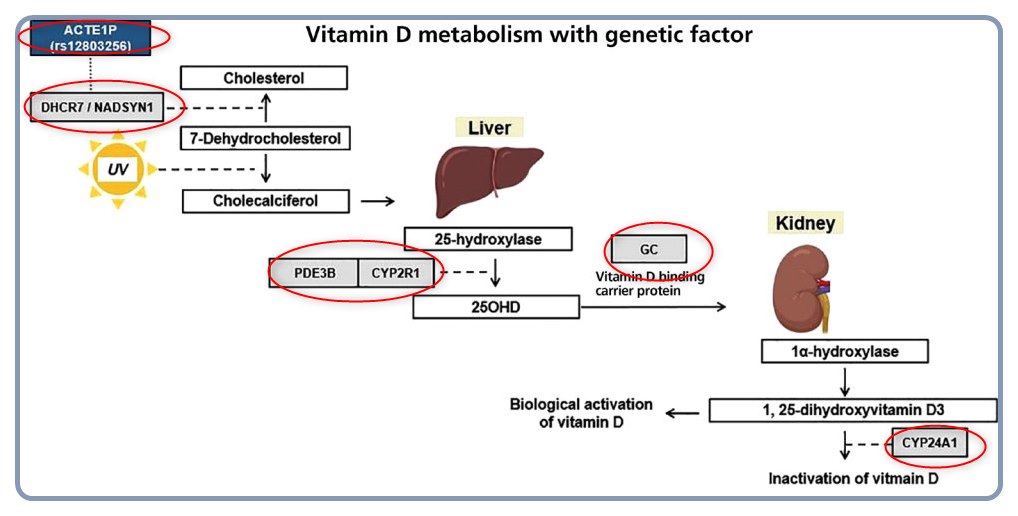Lower vitamin D associated with several new genes (Korea GWAS)
Unveiling Genetic Variants Underlying Vitamin D Deficiency in Multiple Korean Cohorts by a Genome-Wide Association Study
Endocrinol Metab (Seoul). 2021 Dec 2. doi: 10.3803/EnM.2021.1241
Ye An Kim 1, Ji Won Yoon 2, Young Lee 3, Hyuk Jin Choi 2, Jae Won Yun 3, Eunsin Bae 3, Seung-Hyun Kwon 3, So Eun Ahn 4, Ah-Ra Do 4, Heejin Jin 5, Sungho Won 4 5 6, Do Joon Park 7, Chan Soo Shin 7, Je Hyun Seo 3
Background: Epidemiological data have shown that vitamin D deficiency is highly prevalent in Korea. Genetic factors influencing vitamin D deficiency in humans have been studied in Europe but are less known in East Asian countries, including Korea. We aimed to investigate the genetic factors related to vitamin D levels in Korean people using a genome-wide association study (GWAS).
Methods: We included 12,642 subjects from three different genetic cohorts consisting of Korean participants. The GWAS was performed on 7,590 individuals using linear or logistic regression meta- and mega-analyses. After identifying significant single nucleotide polymorphisms (SNPs), we calculated heritability and performed replication and rare variant analyses. In addition, expression quantitative trait locus (eQTL) analysis for significant SNPs was performed.
Results: rs12803256, in the actin epsilon 1, pseudogene (ACTE1P) gene, was identified as a novel polymorphism associated with vitamin D deficiency. SNPs, such as rs11723621 and rs7041, in the group-specific component gene (GC) and rs11023332 in the phosphodiesterase 3B (PDE3B) gene were significantly associated with vitamin D deficiency in both meta- and mega-analyses. The SNP heritability of the vitamin D concentration was estimated to be 7.23%. eQTL analysis for rs12803256 for the genes related to vitamin D metabolism, including glutamine-dependent NAD(+) synthetase (NADSYN1) and 7-dehydrocholesterol reductase (DHCR7), showed significantly different expression according to alleles.
Conclusion: The genetic factors underlying vitamin D deficiency in Korea included polymorphisms in the GC, PDE3B, NADSYN1, and ACTE1P genes. The biological mechanism of a non-coding SNP (rs12803256) for DHCR7/NADSYN1 on vitamin D concentrations is unclear, warranting further investigations.


📄 Download the PDF from VitaminDWiki
VitaminDWiki - Genetics category has
{include}
VitaminDWiki - Vitamin D Binding Protein category listing has items and:
{include}
VitaminDWiki - Vitamin D Binding Protein has a list of health problems
{include}
